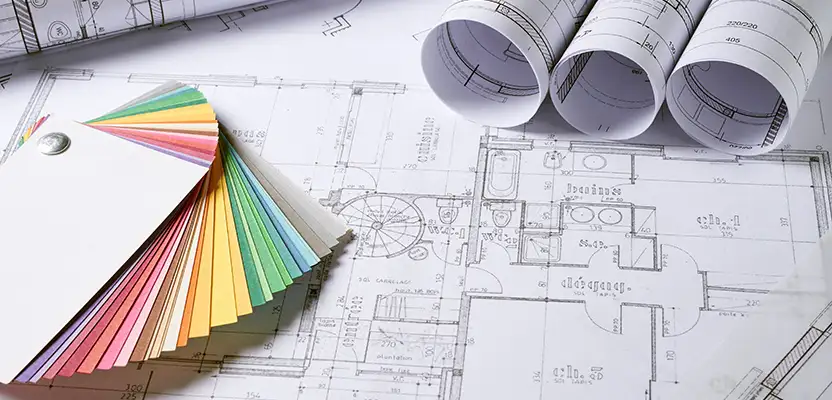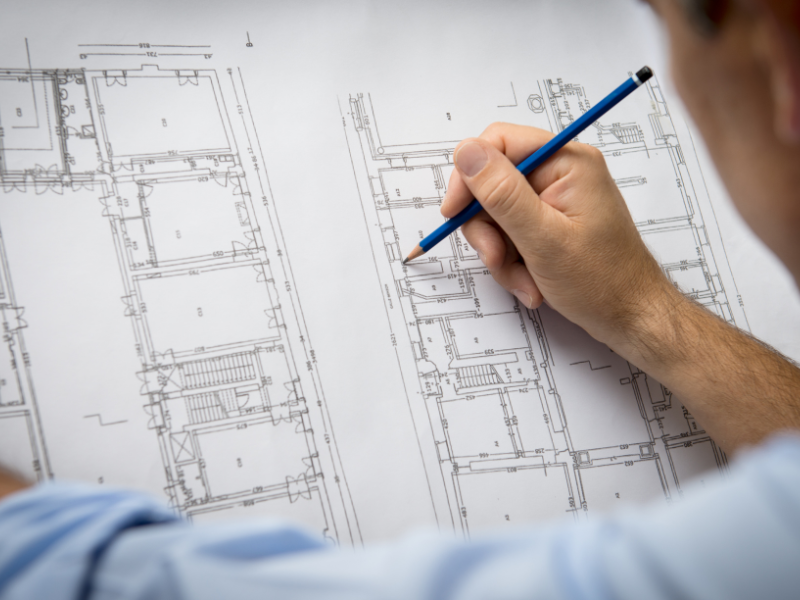Architect Career Path: Abilities, Training, and Growth Guide
Architect Career Path: Abilities, Training, and Growth Guide
Blog Article
Comprehending the Diverse Profession Paths Available for Aspiring Architect
As an aspiring Architect, you have a globe of career paths awaiting you. Each path offers one-of-a-kind obstacles and opportunities to apply your imagination and technological expertise. Whether you're attracted to traditional architecture or the nuances of lasting style, there's a niche that straightens with your passions. Comprehending these diverse options can form your professional journey, yet which direction will you select to check out initially?
Standard Style: Designing Frameworks and structures
Typical style concentrates on designing buildings and frameworks that mix functionality with aesthetic charm. Your layouts can reflect cultural heritage, showcasing local practices while fulfilling modern-day demands.
You'll create abilities in composing, model-making, and website evaluation, permitting you to visualize and communicate your ideas efficiently. Engaging with clients, you'll require to comprehend their vision and equate it right into possible designs.
Additionally, building codes and sustainability techniques are necessary in your work, ensuring your structures are secure and eco-friendly. As you grow in your profession, you'll find possibilities in residential, business, or also remediation projects, each offering one-of-a-kind obstacles. Accepting conventional architecture leads the way for a meeting occupation that admires the past while shaping the future.
Urban Planning: Forming Communities and Public Spaces
As an aspiring Architect, you can play an essential duty as a city coordinator, transforming just how neighborhoods communicate and operate. By employing area interaction approaches, you'll ensure that residents have a voice in forming their environment. And also, incorporating sustainable layout principles will certainly help develop spaces that not only fulfill today's needs however additionally safeguard the future.
Duty of Urban Planners
While lots of may think about designers as the sole enthusiasts behind structures, metropolitan organizers play a crucial role fit the broader landscape of neighborhoods and public areas. They analyze land usage, zoning legislations, and community requires to create sustainable atmospheres that boost lifestyle. By working together with different stakeholders, you'll aid design parks, transportation systems, and residential areas that advertise social communication and accessibility. Urban coordinators likewise concentrate on ecological factors to consider, making certain that growths integrate eco-friendly areas and assistance biodiversity. Your know-how in spatial design and neighborhood characteristics allows you to visualize future growth while maintaining social heritage. In this important function, you'll straight affect just how individuals experience their surroundings, making every project a chance for favorable change.
Area Interaction Techniques
Efficient neighborhood involvement strategies are important for metropolitan organizers to guarantee that the voices of locals are heard and valued in the preparation procedure. To cultivate meaningful dialogue, you ought to focus on open discussion forums and workshops where area members can express their ideas and issues. By actively incorporating and listening feedback, you'll produce areas that mirror the area's demands, ultimately leading to even more lasting and effective urban atmospheres.
Lasting Design Concepts
When making city areas, integrating sustainable style principles is important for developing atmospheres that flourish both environmentally and socially. Think about integrating green areas, like parks and gardens, to boost biodiversity and enhance air high quality.
Creating with water preservation in mind is additionally crucial-- think concerning rainfall gardens and absorptive surface areas to manage stormwater. Entailing community participants throughout the preparation process assurances that the spaces you produce fulfill their requirements and urge social communication. By accepting these concepts, you'll contribute to vivid, lasting city landscapes that benefit every person.

Landscape Architecture: Developing Sustainable Exterior Settings
As you check out landscape design, you'll uncover vital layout principles that produce gorgeous and functional outdoor areas. Sustainable techniques play an essential function in making sure these atmospheres grow while decreasing environmental influence. Plus, you'll locate a range of career possibilities that permit you to make a genuine distinction in exactly how people interact with nature.
Style Principles in Landscape
Recognizing style principles in landscape design is necessary for developing sustainable outside atmospheres that balance with nature. You'll need to contemplate components like proportion, range, and equilibrium to guarantee your layouts really feel cohesive and inviting. In addition, pay attention to seasonal modifications, creating with products that match the environments year-round.
Sustainable Practices Summary
Sustainable methods in landscape style not only concentrate on aesthetics but additionally prioritize environmental wellness and resource preservation. By integrating native plants, you enhance biodiversity and lower the requirement for chemical plant foods and pesticides. Implementing reliable irrigation systems assists preserve water and decreases overflow, securing close-by communities. You can make rooms that advertise soil health, such as using natural products and exercising permaculture principles. Furthermore, including environment-friendly infrastructure, like rain yards and porous sidewalks, aids in stormwater administration and minimizes city warmth. You add to a healthier earth and provide spaces that cultivate area link when you develop outdoor atmospheres with sustainability in mind. Inevitably, these methods ensure your layouts benefit both individuals and the environment for years to come.
Occupation Opportunities Expedition
With a solid foundation in sustainable techniques, landscape architecture uses a selection of review occupation paths that allow you to make a meaningful influence on the setting. Urban coordinators usually collaborate with landscape designers to produce eco-friendly spaces in urban settings, improving city livability. If you're enthusiastic about education, consider becoming a landscape style instructor, motivating future generations.
Sustainable Design: Concentrating On Eco-Friendly Practices
As you explore your job in design, welcoming eco-friendly methods can set you apart in an affordable field. Sustainable style concentrates on producing buildings that reduce ecological effect while improving resident well-being. By including renewable materials, energy-efficient systems, and lasting structure strategies, you'll contribute to a greener future.
Beginning by acquiring understanding of environment-friendly qualifications like LEED or BREEAM, which can bolster your qualifications. Think about just how natural light, ventilation, and thermal performance can maximize layout. Work together with designers and ecological experts to introduce solutions that decrease waste and preserve sources.
Don't forget the importance of community participation-- appealing local stakeholders can motivate designs that harmonize with the setting. As customers progressively focus on sustainability, your competence in green techniques will not just attract jobs however also accomplish your enthusiasm for accountable design. Accept this essential facet of the profession, and watch your career thrive.
Historical Preservation: Shielding and Recovering Social Heritage
While you begin on your building journey, think about the vital role of historic preservation in maintaining our cultural heritage. This area concentrates on the security and repair of significant structures, websites, and structures that inform the stories of our past. By engaging in historical conservation, you'll aid safeguard the architectural heritage that forms neighborhood identity.
As a historical preservation Architect, you'll evaluate historical relevance and evaluate the problem of frameworks. You'll work very closely with preservationists and historians to assure authentic reconstruction methods are used. This occupation path enables you to mix imagination with research, allowing you to design services that appreciate original materials and craftsmanship.
Your work not just adds to sustainability by recycling existing structures however additionally fosters a feeling of pride within neighborhoods. Welcoming this path will certainly aid you become a guardian of background, protecting the tales and aesthetics that enhance our lives.
Inside Style: Enhancing Indoor Spaces
Historic conservation and indoor architecture both share a commitment to improving the constructed environment, however they concentrate on various aspects. While historical conservation emphasizes preserving a framework's social and historic worth, indoor architecture nos in on maximizing indoor areas for functionality and aesthetics.
As a hopeful Architect, you'll discover that interior design allows you to mix creative thinking with technological skills. You'll make rooms that not just look excellent but also promote convenience and performance. This field includes comprehending just how light, shade, and materials communicate within a room, affecting mood and use.
You'll work with various jobs, from household homes to commercial workplaces, making certain that each setting meets the needs of its residents. By focusing on customer experience, you can change insides right into motivating and practical rooms, making a substantial influence on how people interact with their surroundings. Embrace the possibility to boost interior atmospheres and form the way individuals live and work.
Industrial Design: Combining Capability With Aesthetic Appeals
Industrial layout plays a vital role in creating items that seamlessly mix looks with performance, guaranteeing that what you use day-to-day is not just aesthetically attractive but additionally functional. As a hopeful Architect, you might engage on your own in this field, concentrating on developing whatever from furniture to consumer electronic devices. Your work involves recognizing individual needs, materials, and manufacturing procedures, enabling you to produce innovative solutions that improve everyday experiences.
In commercial design, you'll frequently team up with makers, designers, and online marketers, guaranteeing that your styles are not just gorgeous yet also viable. You'll learn to balance kind and function, prioritizing functionality without giving up style. By developing your abilities in sketching, 3D modeling, and prototyping, you'll be fully equipped to bring your concepts to life. This profession course provides a vibrant environment where creative thinking satisfies usefulness, making it a gratifying option for engineers curious about shaping the products of tomorrow.
Regularly Asked Inquiries
What Educational Qualifications Do I Need to End Up Being an Engineer?
To end up being a designer, you'll need a specialist level in design, typically a Bachelor's or Master's. click resources In addition, you'll have to complete a teaching fellowship and pass the Architect Registration Exam to practice legitimately.
Are There Accreditation Needs for Various Architectural Career Paths?
Yes, there're qualification demands for numerous architectural courses. Architect. You'll need to pass tests, total internships, and occasionally go after specialized training, relying on your selected emphasis, like landscape architecture, metropolitan design, or historical conservation
What Software Application Skills Are Crucial for Designers Today?

Just How Can I Gain Practical Experience While Researching Style?
You can get sensible experience by interning at architectural companies, joining layout competitions, volunteering for area projects, or collaborating with classmates on real-world projects. These chances improve your skills and construct beneficial links in the sector.
What Job Opportunities Exist Outside Conventional Design Firms?
You can explore different work chances outside traditional design companies, like metropolitan preparation, interior decoration, landscape architecture, building management, realty advancement, and even duties in sustainability consulting. useful source Each offers one-of-a-kind obstacles and rewards.
Whether you're attracted to conventional style or the nuances of lasting design, there's a specific niche that aligns with your passions.When making urban rooms, integrating lasting layout principles is critical for creating environments that prosper both environmentally and socially.As you discover landscape architecture, you'll discover vital style concepts that produce beautiful and functional outside rooms.Recognizing layout concepts in landscape style is essential for creating sustainable outdoor atmospheres that balance with nature.In industrial style, you'll commonly team up with marketing experts, suppliers, and designers, ensuring that your layouts are not just lovely however likewise possible.
Report this page